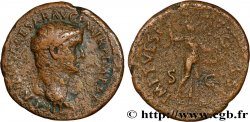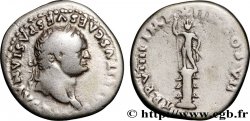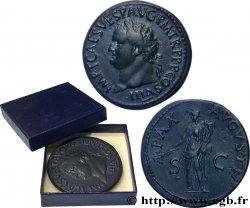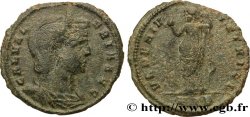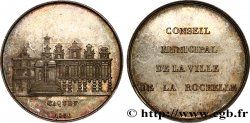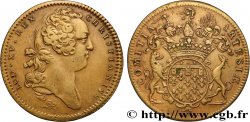v27_0520 - TITUS Denier
MONNAIES 27 (2006)
Startpreis : 380.00 €
Schätzung : 650.00 €
Erzielter Preis : 380.00 €
Anzahl der Gebote : 1
Höchstgebot : 385.00 €
Startpreis : 380.00 €
Schätzung : 650.00 €
Erzielter Preis : 380.00 €
Anzahl der Gebote : 1
Höchstgebot : 385.00 €
Type : Denier
Datum: 80
Name der Münzstätte / Stadt : Roma
Metall : Silber
Der Feingehalt beträgt : 900 ‰
Durchmesser : 18,5 mm
Stempelstellung : 6 h.
Gewicht : 3,39 g.
Kommentare zum Erhaltungszustand:
Très beau portrait sur un flan un peu court, mais bien centré des deux côtés. Revers de haut relief. Une patine grise superficielle avec des reflets dorés recouvre l’ensemble de la pièce
N° im Nachschlagewerk :
Vorderseite
Titulatur der Vorderseite IMP TITVS CAES VESPASIAN AVG P M..
Beschreibung Vorderseite Tête laurée de Titus à droite (O*).
Übersetzung der Vorderseite “Imperator Titus Cæsar Vespasianus Augustus Pontifex Maximus”, (L’empereur Titus césar Vespasien auguste grand pontife).
Rückseite
Titulatur der Rückseite TR P IX IMP XV COS VIII P P.
Beschreibung Rückseite Trône à dossier triangulaire.
Übersetzung der Rückseite “Tribunicia Potestate nonum Imperator quintum decimum Consul octavum Pater Patriæ”, (Revêtu de la neuvième puissance tribunitienne de la quinzième salutation impériale consul pour la huitième fois père de la patrie).
Kommentare
Pour ce type, il y a deux types de trône, l’un arrondi que l’on rencontre pour l’aureus (BN/R. 46) et le denier (BN/R. 47, 48 et 51), l’autre triangulaire signalé pour le denier (BN/R. 49-50) comme sur notre exemplaire. Michel Prieur fait remarquer qu’un tissu est posé sur le trône, il pourrait s’agir du paludamentum (manteau de pourpre rouge du général victorieux, puis de l’empereur).
For this type, there are two types of throne, one rounded which is found for the aureus (BN/R. 46) and the denarius (BN/R. 47, 48 and 51), the other triangular reported for the denarius (BN/R. 49-50) as on our example. Michel Prieur points out that a cloth is placed on the throne, it could be the paludamentum (red purple cloak of the victorious general, then of the emperor)
For this type, there are two types of throne, one rounded which is found for the aureus (BN/R. 46) and the denarius (BN/R. 47, 48 and 51), the other triangular reported for the denarius (BN/R. 49-50) as on our example. Michel Prieur points out that a cloth is placed on the throne, it could be the paludamentum (red purple cloak of the victorious general, then of the emperor)








 Berichten über einen Fehler
Berichten über einen Fehler Die Seite drucken
Die Seite drucken Teilen meiner Auswahl
Teilen meiner Auswahl Stellen Sie eine Frage
Stellen Sie eine Frage Einlieferung/Verkauf
Einlieferung/Verkauf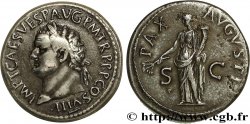
 Details
Details

